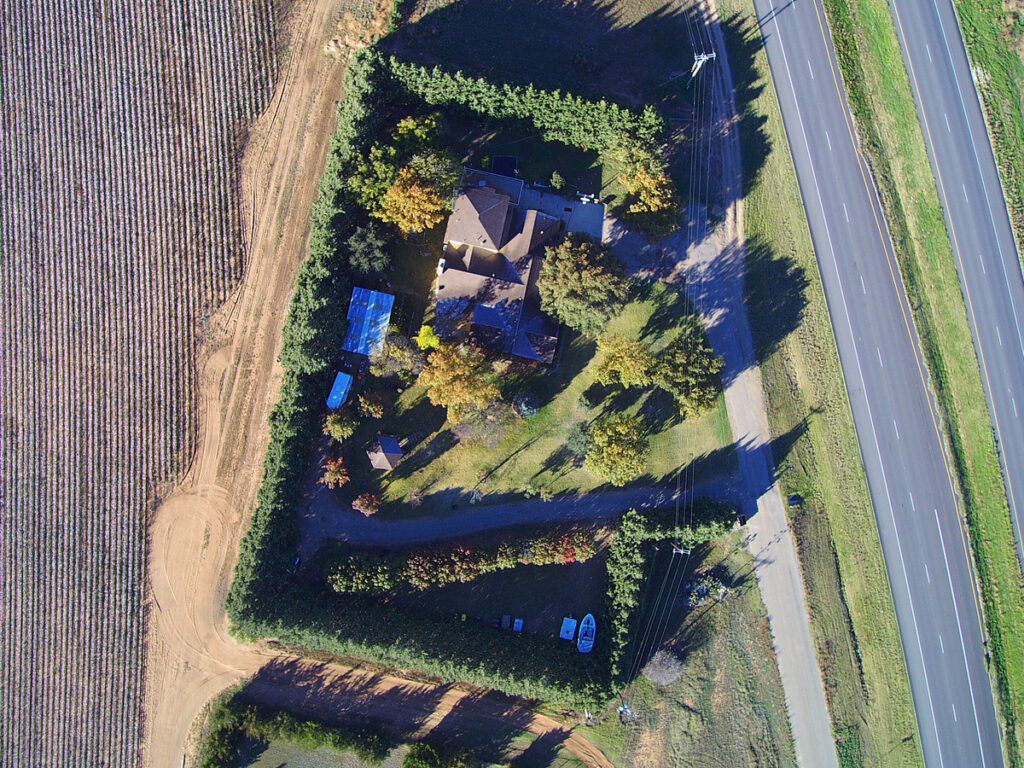Windbreaks are trees and shrubs systematically planted adjacent to fields, homesteads, or feedlots as a barrier to reduce or redirect wind. They serve to enhance aesthetics, increase land value, reduce soil erosion, protect buildings and/or equipment, and establish wildlife habitat.
Windbreak design
Windbreaks may be designed or installed differently depending on their intended purpose. Six of the most common windbreak types are:
- Homestead/farmstead windbreaks enhance the aesthetics and increase the heating and cooling efficiency of homes.
- Livestock windbreaks protect cattle in severe weather conditions by reducing the amount of energy cattle use to keep warm. This increases weight gain and decreases producer’s feed costs.
- Field windbreaks protect crops and soil from wind erosion and moisture loss.
- Dry corner windbreaks establish wildlife habitat, increase watering efficiency of adjacent center pivot irrigation systems, and protect grazing livestock.
- Living snow fence windbreaks keep snow from drifting onto farm roads and highways, protect grazing livestock, and establish wildlife habitat.
- Wildlife windbreaks create permanent vegetation with tree and shrub species which provide food and cover for wildlife.
Windbreak tree planting process
Fall site preparation
Field preparation in the fall, prior to planting windbreak seedlings, is vital to the success of the windbreak. Site prep requires deep plowing 18 inches deep, which allows the soil to quickly absorb and store any winter moisture that may fall. Fall preparation breaks down soil clods created by deep plowing and leaves soil loose, which will allow for ease when planting trees in the spring.
Tree planter
A tree planter is a tractor drawn implement. If the site prep is done in advance, 400 to 500 seedlings can be planted per hour.
Fabric layer
A fabric layer, also a tractor-drawn implement, is used to apply a black UV synthetic fabric, once the seedlings are planted. The fabric layer rolls out a six by 300–500-foot roll of fabric in about two minutes. The fabric retains soil moisture and enhances weed control for about five years.
Spacing
Each row within the windbreak is planted at least 20 feet apart. Within each row, the evergreens and deciduous trees are planted 10 to 25 feet apart and the shrubs five to six feet apart, to allow room for the species to grow and spread outwardly.
Miscellaneous
Wind-screens are used to protect the year-old evergreens against harsh winds until they become more established. Rodent protection tubes can also be placed around the young seedlings to protect them for their first few years.
Windbreak planting assistance
Our West Texas Nursery, located outside of Lubbock, produces windbreak seedlings you can purchase and has a team that offers hands-on landowner assistance. They will visit the property to discuss protection needs and site-specific limitations, then design a windbreak specifically tailored to that location. Tree planter and fabric layer implements are also available for rent to assist with large windbreak planting projects.
